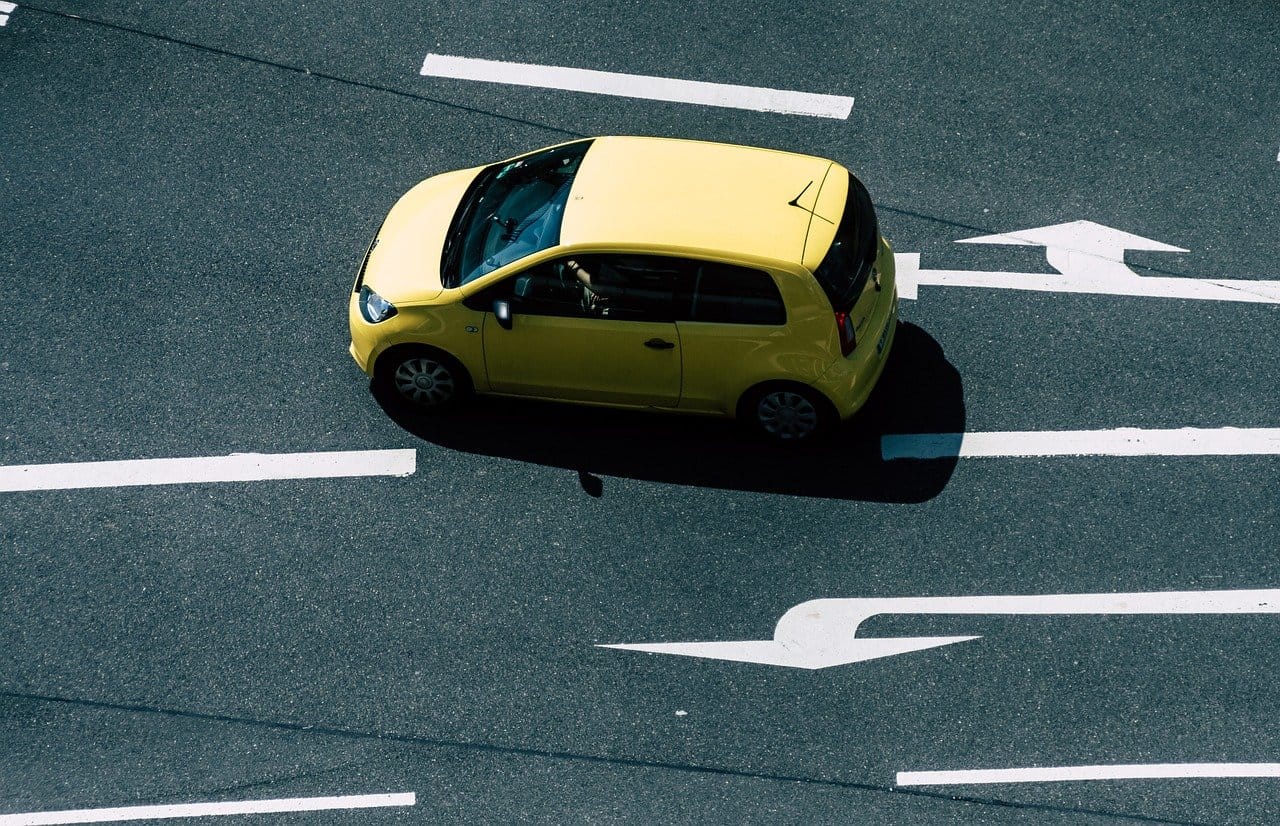Waze vs. Google Maps: Which one is the best for you?

Getting from point A to point B as fast as possible is the ultimate goal of every driver. Whether you’re a rideshare driver or racing against the clock to get somewhere on time, getting the right directions makes a massive difference. This is where navigation apps come in, providing us with the best route possible to reach our destination. And with so many apps available, it’s natural that there will be some differences between them.
Ultimately, when it comes to choosing the best navigation app, the choice goes down to two contenders – Google Maps and Waze. These two Google-owned navigation apps are considered the most reliable and efficient. However, while they come from the same parent company and share the same goal – providing you with the most efficient route – and similar features, these two apps aren’t equal.
But who wins the Google Maps vs. Waze debate? We’ve decided to settle it once and for all in this comprehensive comparison guide. Let’s see what the two apps have in store for their users, the main differences, and which one you should choose to get the best experience when driving.
About Waze
Although not as popular as Google Maps, Waze has gained its fair share of users since its launch in 2008. In 2013, the app was acquired by Google for an estimated $1 billion. Since then, Google has developed Waze as a separate community-based app, targeting it primarily to drivers.
As for the app itself, Waze takes a different approach than Google Maps. In a nutshell, Waze is a community-driven navigation app, whereas Google Maps takes a data-driven approach. Waze users can alert other drivers about accidents, heavy traffic, speed traps, police control, and more.
Additionally, since its acquisition by Google, Waze has developed more additional features. One of the most significant ones is its Google Assistant and Siri support, which makes using the app much more convenient.
About Google Maps
While both Google Maps and Waze provide similar services, Google Maps is much more comprehensive. As covered, Waze is a more driver-focused app, whereas Google Maps provides navigation for anyone, whether they’re commuting using public transportation, walking, riding a bike, or driving. Additionally, besides directions, the app also provides information regarding local landmarks, nearby businesses, and more.
As an Android-focused app, Google Maps integrates all of the significant Android phone features, such as Google Assistant, Google Street View, and Google Search. Besides these services, Google Maps offers features similar to Waze, including real-time traffic data. The app also has an AR (augmented reality) feature you can use to help navigate around a new neighborhood.
Waze vs. Google Maps
Since both Google Maps and Waze are navigation apps run by the same parent company, it’s natural that there are numerous similarities between the two. Both are designed to provide users with the best driving directions possible, offer real-time data, and support several Google services. However, while Waze is more community-based, Google Maps is more data based. Google Maps is also more comprehensive and comes with numerous additional features.
When comparing Google Maps to Waze, we can distinguish the following key differences:
| Waze | Google Maps |
|
|
As you can see then, the differences between Waze and Google Maps are relatively subtle. To decide which one is better, we need to take a deeper dive into how both apps perform and what kind of experience they offer.
App availability
Since both Waze and Google Maps are run by Google, it goes without saying that they are widely available, both for Android and iPhone users. You can find the two apps on Google Play Store and Apple Store, and they’re both compatible with Android Auto and Apple CarPlay. Both platforms also come with desktop versions, which is a nice addition even though you can’t get live navigation that way. In summary, nothing to set both navigation map apps apart here.
Interface
The interface is the first significant difference between the two. Although both Waze and Google Maps are owned by Google, they take a much different approach to the app design. Google Maps provides users with loads of information from the very moment they open the app, whereas the Waze interface is much more minimalistic.
Where does the difference come from? Well, as covered, despite both being navigation apps, Waze and Google Maps are dedicated for various purposes. Waze is focused on providing drivers with accurate directions and all the real-time data they need to get to their destination quickly and safely. Google Maps, on the other hand, treats navigation only as one of its numerous features.
As for the navigation itself, both apps take a similar, minimalistic approach cutting down the clutter and providing you only with the necessary information (your icon, current traffic situation, your route, speed limits, etc.). Overall, if you want to focus solely on driving, Waze does look more convenient. Google Maps tends to look cluttered at times, especially when in a bigger city.
Navigation
Ultimately, both Waze and Google Maps share the same purpose – to get you from point A to B. The route, however, will depend on the map app you use. That’s because while sharing the same goal, both apps take a different approach to how to reach it.
Starting with Waze, it’s definitely not your traditional navigation app. Instead of providing you with one route and leaving you to it, it constantly analyzes current conditions, often changing the route along the way to get you to the destination as fast as possible. And while it’s definitely beneficial when you’re in a rush, it can make your drive a bit hectic at times, as you need to continuously pay attention to where the app wants to take you and expect quick maneuvers.
On the other hand, Google Maps takes a more traditional approach to navigation. Once you type in your destination, Google Maps will calculate the best route along with additional information on time and possible alternate routes. You then simply pick your route and follow it turn by turn directions from the app. Google will also alert you on obstacles, road closures, and traffic jams to avoid along the way.
Now, the difference here is that while Google Maps only tells you about traffic updates and offers alternate routes, Waze does something about it. The app will change the route depending on possible delays, providing you with the fastest way to get to your destination. Summing up, for a more convenient drive, Google Maps is the app to use, whereas Waze is an excellent choice when you’re in a hurry.
Real-time data
Generally speaking, both apps rely heavily on real-time data they provide from users, especially Waze, whose entire idea is built around community-provided information. As a result, Waze provides its users with accurate directions, alternative routes, road hazards, and traffic incidents. In fact, the app collects the data automatically when it’s open. Waze users can also submit traffic and accident reports, warning other drivers about possible obstacles.
Google Maps also relies on real-time traffic data from its users, but it doesn’t treat it as its only source of information. Besides collecting information from Google Maps users, the app also takes advantage of its historical data to estimate what conditions might look like depending on the time of the day and location. Combining these two sources of information, Google can provide users with even more data than Waze, keeping you well-informed at all times.
Of course, Waze data is still very reliable. However, with its years of collecting data and analyzing various factors, Google Maps certainly has the upper hand when it comes to assessing the best route to get to the destination. Google Maps knows how many people use a specific route and where traffic jams usually form at given times, so it can estimate more accurately how long it will take to reach your destination. It’s a huge advantage when planning a trip, especially a long one.
Map features
Google Maps and Waze offer their users numerous features to help maximize the driving experience. For instance, both display the local speed limit, ensuring you always know how fast to drive. Other than that, Waze allows its users to report where the speed traps are. You can also request roadside assistance from other Waze users when needed.
Google Maps, on the other hand, provides excellent help when looking for local destinations, such as businesses and landmarks (more on that later). The app supports Google Street View as well, so you can ensure you arrive at the right place if you’ve never been to it before. As for other things, both apps support iOS and Android devices. Both have also introduced Spotify integration.
What does tip the balance in favor of Google Maps is that the app allows you to download maps, routes, and locations. This means you can easily switch on your offline mode anytime. The Waze app doesn’t offer such a service, meaning you require your data connection turned on at all times to use it. Long story short, when it comes to overall driving app user experience, Google Maps does seem like a better choice.
Discovery
One might expect that Google Maps is a clear winner when comparing it to Waze’s discovery feature. Surprisingly, the difference here is not that robust. Although not as comprehensive as Google’s discovery, the Waze app does a pretty good job providing its users with information about nearby locations, such as businesses, landmarks, gas stations, supermarkets, and more.
Both apps allow you to quickly find what you’re looking for, thanks to a search bar and specialized buttons. What distinguishes the two is the amount of information they provide. When it comes to that, Google Maps is a winner. You can find there everything you need about particular locations and businesses, including phone numbers, contact information, addresses, reviews, photos, and opening hours. Waze keeps things more basic, rarely giving users some extra insight.
Voice control
Having an option to control your navigation hands-free is vital when driving a car. When it comes to voice control, both Google Maps and Waze offer practically the same feature. You can access voice control either by tapping on the on-screen microphone or using a voice command to activate your Google Assistant.
Now, whereas the latter option isn’t a problem if you’re an Android user, you may be forced to go through some extra steps when using an iPhone. In general, you’ll need to be more specific about which app you want Siri to activate. By default, Siri will open up Apple Maps instead of Waze, so be sure to specify if you want to get directions from Waze. It’s not something one can consider a downside, though, meaning the two apps provide a similar experience.
Customization
If you like to customize your app for a more engaging driving experience, Waze provides you with numerous great customization options. First of all, there are several voices you can set to guide you when driving, including celebrities or cartoon characters. You can even record your own voice and use it instead.
When it comes to customizing the Waze interface, the app also grants its users plenty of options. First, there are ten vehicle icons that show on your screen when navigating, including a Formula One car or motorbike. There’s also an option to customize your “mood,” which is the avatar other users see when using their apps.
Compared to Waze, Google Maps doesn’t provide its users with as many customization options. Regarding voice directions, Google Maps only has one robotic voice depending on the country or region. As for interface customization, Google Maps users can choose between three standard vehicle icons. Long story short, if you want to spice your driving experience up with customization, Waze is definitely the app for you.
Alternate transportation
In case you need to get somewhere using public transit, Google Maps is a clear winner. The app provides information not only for drivers but also for people using public transportation, walking, or cycling. The support for public transit is exceptionally comprehensive, with Google Maps displaying timetables, routes, as well as information about delays. Besides that, the app is integrated with popular ride-sharing services like Uber or Lyft, and it will also display whether there are any scooters or bikes available for rental in your area.
As for Waze, the app offers nothing when it comes to public and alternate transport. As covered, Waze is a driver-focused app with only one goal in mind – to provide drivers with the fastest possible route. If, for some reason, you can’t use your car or motorbike, Google Maps will provide you with an elegant solution for your struggles.
In-app advertising
In-app advertising may not be the most vital part of this comparison review, but since ads can impact the overall user experience, it’s still a feature we should cover. When it comes to ads, both apps have them. However, they handle things differently when displaying them.
Starting with Google Maps, the app is relatively subtle with its advertising. There are no flash ads disrupting your attention when driving, which is a good thing considering we’re dealing with a navigation mapping app. The story is entirely different for Waze, which displays ads in a flashy and intrusive way every time you stop moving. And while they disappear automatically as you start moving again, they can disrupt your overall experience. The point goes to Google Maps.
Which navigation app to choose?
Now that we’ve covered what Google Maps and Waze have to offer, it’s time to answer that one final question – which app should you choose? Well, ultimately, it all comes down to one thing – your personal preference.
If you want a navigation app that focuses on getting you from one place to another in the fastest way possible, choose Waze. If you want a more informative map view with more additional features, choose Google Maps. There’s no clear winner here, with both Google Maps and Waze offering excellent service.
The good idea is to use two. For instance, if you’re driving for Uber or Lyft, you can use Google Maps to scan the busiest area and plan your pickup spots. Then, you can take advantage of Waze to get your passenger from point A to B as fast as possible. With both apps being free, downloading two and using them interchangeably will provide you with the ultimate driving experience.



